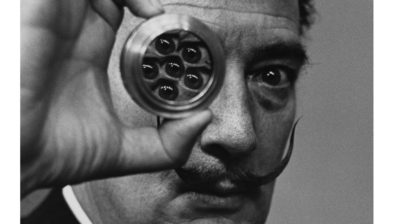Many of us have seen a very popular video, where some boys and girls play with a ball, and we are asked to pay attention to the number of times that those in white T-shirts pass the ball to those with black T-shirts. With the degree of precision and attention that is asked from us, and with the pressure generated by wanting to do it well, our brain processes and filters the required information and ignores a whole series of parallel events that happen in the video – even if our eyes do detect them.
This effect, called inattentional blindness, is just one of the shortcuts that our brain has adopted after millions of years of evolution to survive day to day and be efficient in the middle of a sea of visual and perceptual information.
These shortcuts are what centuries of trial and error in the world of magic have taken advantage of, and good magicians use them to make us recreate perceptual illusions. A good game of magic, not a simple trick, will always include a good psychological / perceptual analysis, to put all the obstacles in our brain, so that when we want to rebuild it, the way the magician wants us to rebuild it, it will be already impossible. They will have pushed us through the wrong exits in a labyrinth of truth, which will not allow us to turn back. A good magician does not have fast fingers, but a great knowledge to manipulate perceptions and memories!
“A good magician does not have fast fingers, but a great knowledge to manipulate perceptions and memories”
Tomàs Marquès-Bonet (IBE)
In this book (“El Cerebro Ilusionista” or “The Illusionist Brain”), created by the unique combination of two exceptional people, Dr. Jordi Camí, director of the Barcelona Biomedical Research Park (PRBB) and a magic scholar, and Dr. Luis M Martinez, Neurobiologist of the Institute of Neurosciences of Alicante (CSIC) and recently awarded an ERC Synergy —congratulations! – you will find a great read for all types of public, not only for scientists.
It is structured in three blocks:
- It begins with a compilation of concepts on the neurological basis of how the brain works and how memories are stored and retrieved.
- Next, the main part of the book, is focused on the psychological and neurological mechanisms that magic uses to enhance an effect, and on understanding why they have an impact on us. Concepts such as continuity, contrast, and the neurological bases of attention manipulation are introduced.
- Finally, in the final part of the book, a compilation of theoretical magic concepts is made where the experience of the public is discussed, ending with an interesting chapter on the scientific method applied to magical knowledge.
Globally, this is a great book to better understand how perception and the brain work, how this organ deceives us on a day-to-day basis and how humans have been able to take advantage of this to express an art.







